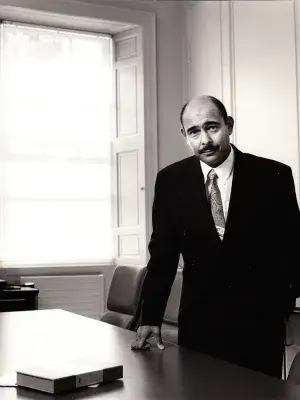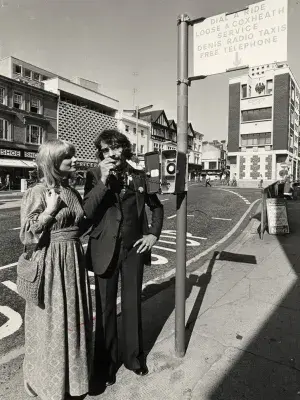I was born into an Indian-Scottish family in Aden, a British Protectorate at the tip of the Red Sea in 1947. My dad, a surgeon, was working at the General Hospital in Aden. He died when I was just 5, so we came home to Scotland. When I was 18, I enrolled at the University of Edinburgh as a Geography undergraduate. I had a passion for music, and I was playing as a guitarist in an R&B band called “The Images” at the time. I had a lot of 9 o’clock classes in my first year and the band would play all over Scotland until late, so I would often get home at 5 in the morning. I would sometimes only get a couple of hours of sleep before lectures - but I never missed one. At the end of my first year, I was doing well. I was 3rd out of 132 students in my year, so I continued the lifestyle - playing in the band and studying at the same time.
On Saturdays, I worked in one of the coolest clothes shops in Edinburgh - J.R. Berry’s on Lothian Road. I was a ‘Mod.’ We were a youth movement that listened to certain bands and wore sharp, smart clothes - we would never wear the same shirt twice. One Saturday, a guy walked into the shop and asked to buy 32 pairs of men’s underpants. I was puzzled - even a Mod would never do that! It turned out that he was a Chauffer for a famous actor Lawrence Harvey. He was organising a surprise 19th birthday party for Jane Asher. At the time she was the Beatle Paul McCartney’s girlfriend, and she was acting as Puck in ‘A Midsummer Night’s Dream’ during the festival. As I was packing the order up, he asked me if I knew any good bands in Edinburgh to play at the party. I told him about my band, and he asked us to play. A few days later, we travelled to a lovely stone house in Edinburgh that they had hired for The Festival. We’d never seen anything like it before and were completely mesmerised—London models and TV stars hanging about, the food and drink was like nothing we’d ever seen before.
During our break, a guy called Jim Dale — he had a Rock TV show on ITV; there was only two TV channels back then— approached us and said: “Hey, you guys are great! What Label are you on?” I said that the only label up here is Robertson’s Jam! Then, he offered to get us a recording contract. The whole experience was surreal; in my mind, I saw this as the beginning of a dream music career. However, I didn’t know that the band would kick me out shortly after that encounter— the members didn’t want me anymore, because I was a student, and they were turning professional. That broke my heart. I spent days just wandering around feeling depressed, I couldn’t get over the betrayal and the loss of my musical dream. However, that was until I decided to start my own 3-piece band called “The Motion!” It was doing well; by 1966, we were level pegging with “The Images”, my old band, and we were both booked to play at the University’s Graduation Ball. However, I’d not been balancing music and studying as well as I had been in my first year, I was called up by the Dean of The Faculty. I had dropped to last place in the finals for the second year and I was told to present myself in the Old Quad. At the meeting, The Dean gave me an ultimatum – I had to choose between music and studying. I chose the latter. I sold my instruments and changed my degree. Two years later, I graduated with distinction as the first ever History and Theory of Architecture student from the University. My young music career taught me my first lesson - how to recover from a slap in the face.



